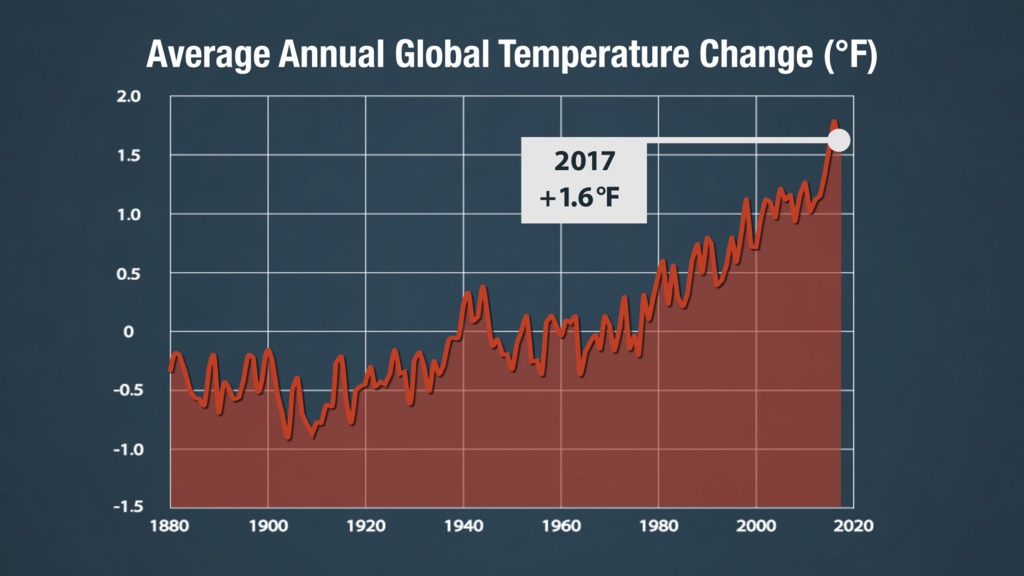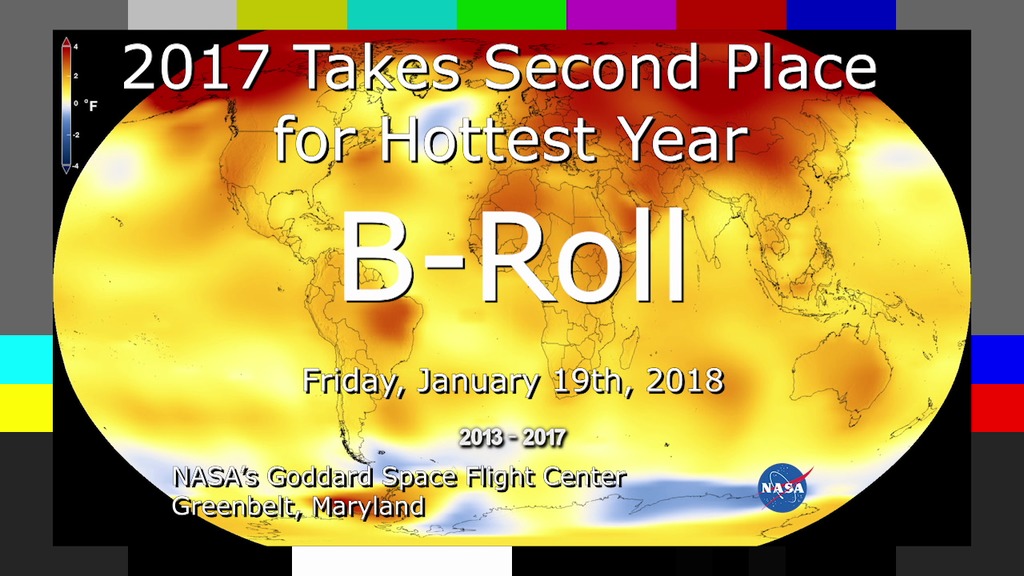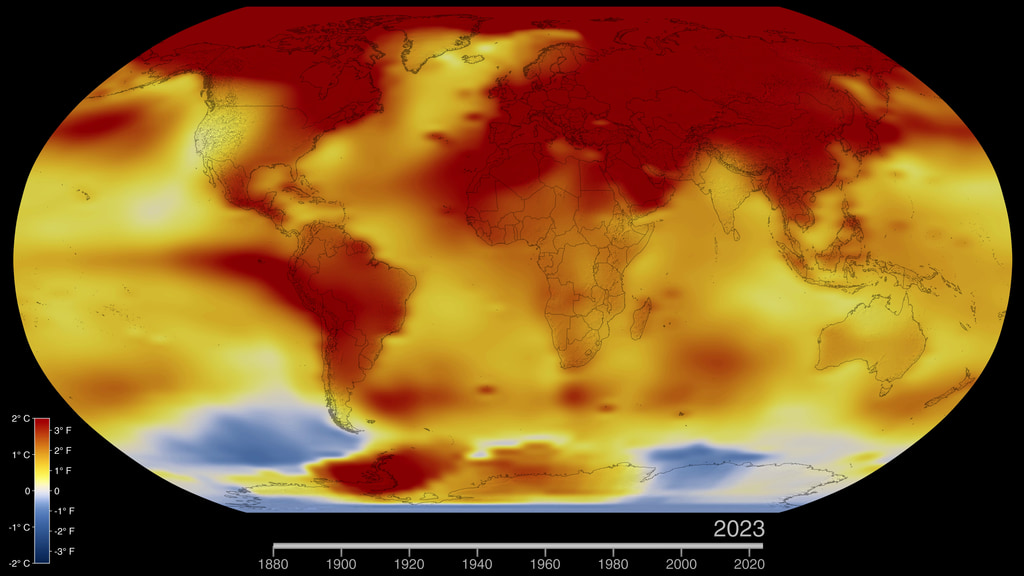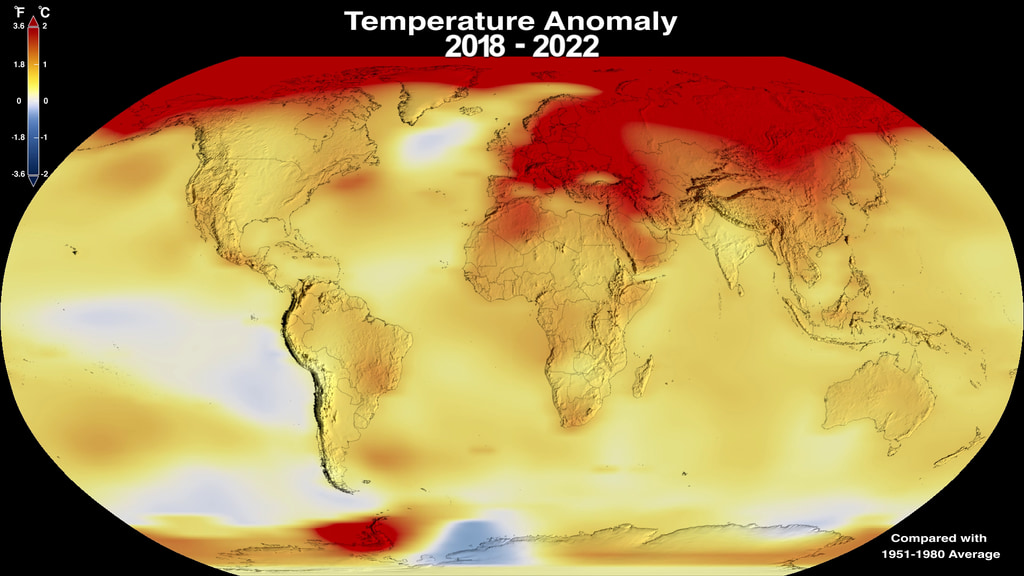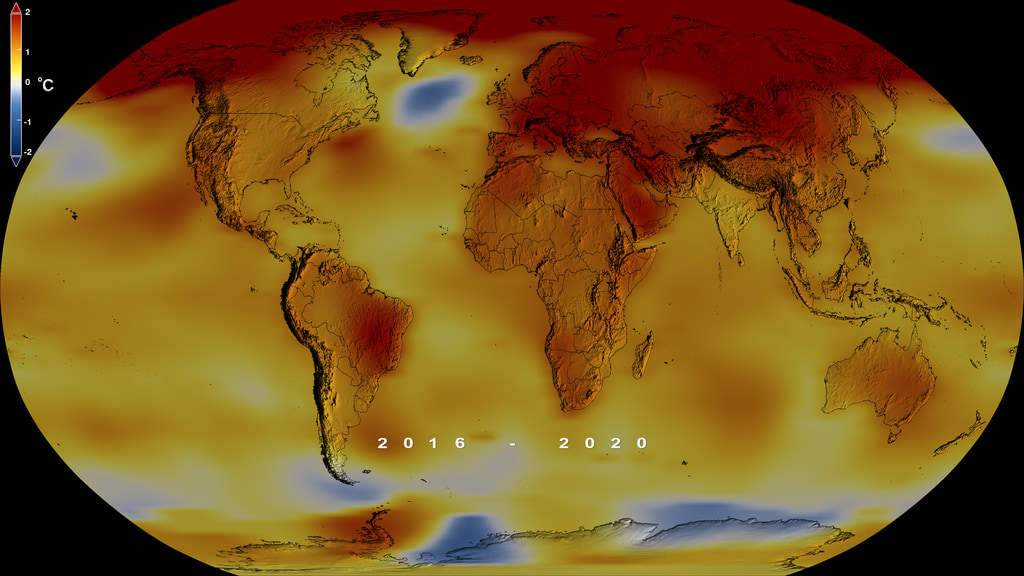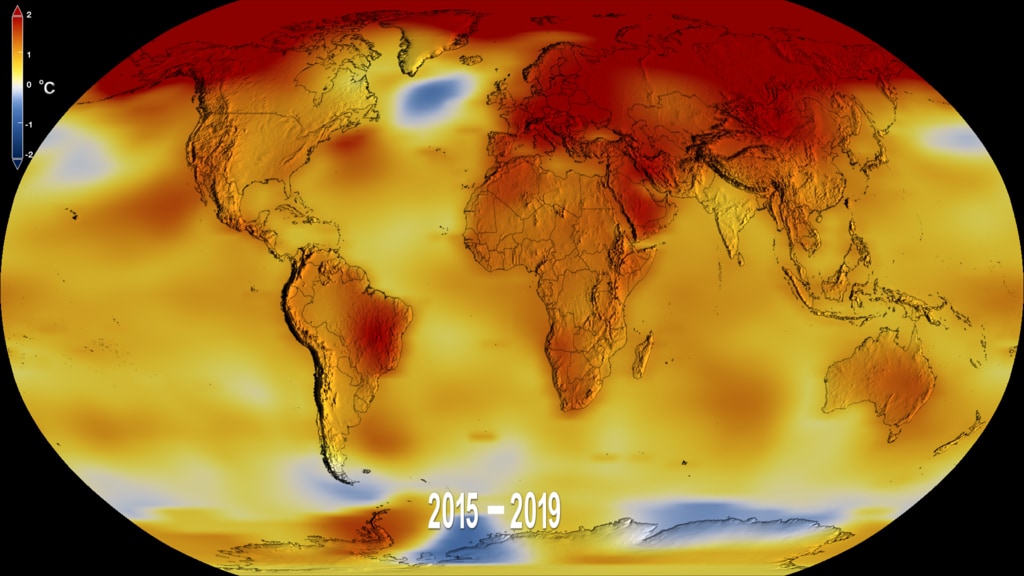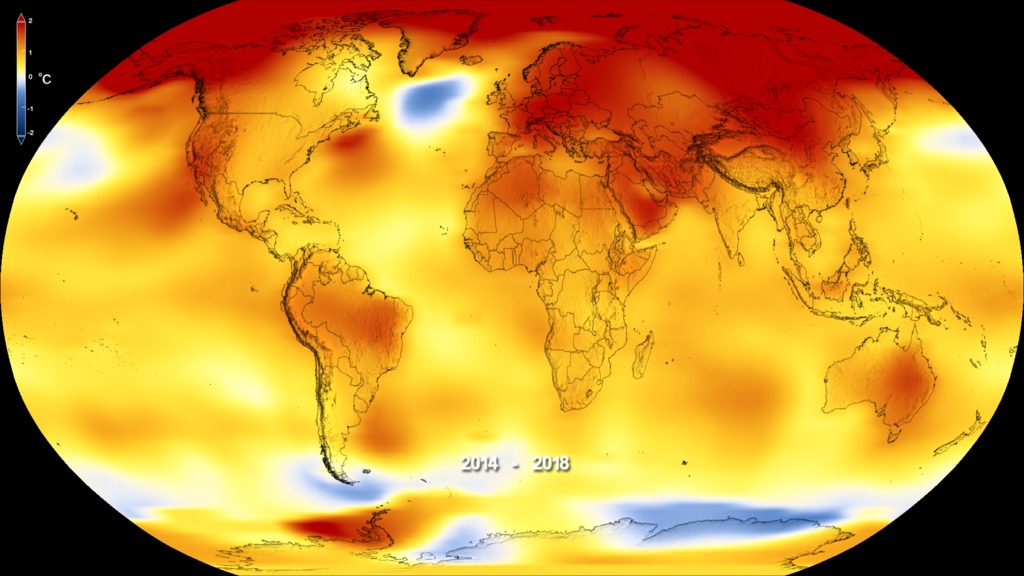A newer version of this visualization is available.
Global Temperature Anomalies from 1880 to 2017
This color-coded map in Robinson projection displays a progression of changing global surface temperature anomalies from 1880 through 2017. Higher than normal temperatures are shown in red and lower then normal termperatures are shown in blue. The final frame represents the global temperatures 5-year averaged from 2013 through 2017. Scale in degree Celsius.
This video is also available on our YouTube channel.
Earth’s global surface temperatures in 2017 were the second warmest since modern recordkeeping began in 1880, according to an analysis by NASA.
Continuing the planet’s long-term warming trend, globally averaged temperatures in 2017 were 1.62 degrees Fahrenheit (0.90 degrees Celsius) warmer than the 1951 to 1980 mean, according to scientists at NASA’s Goddard Institute for Space Studies (GISS) in New York. That is second only to global temperatures in 2016. Last year was the third consecutive year in which temperatures were more than 1.8 degrees Fahrenheit (1 degree Celsius) above late nineteenth-century levels.
NASA’s temperature analyses incorporate surface temperature measurements from 6,300 weather stations, ship- and buoy-based observations of sea surface temperatures, and temperature measurements from Antarctic research stations.
These raw measurements are analyzed using an algorithm that considers the varied spacing of temperature stations around the globe and urban heating effects that could skew the conclusions. These calculations produce the global average temperature deviations from the baseline period of 1951 to 1980.
The full 2017 surface temperature data set and the complete methodology used to make the temperature calculation are available at:http://data.giss.nasa.gov/gistemp/
GISS is a laboratory within the Earth Sciences Division of NASA’s Goddard Space Flight Center in Greenbelt, Maryland. The laboratory is affiliated with Columbia University’s Earth Institute and School of Engineering and Applied Science in New York.
NASA uses the unique vantage point of space to better understand Earth as an interconnected system. The agency also uses airborne and ground-based monitoring, and develops new ways to observe and study Earth with long-term data records and computer analysis tools to better see how our planet is changing. NASA shares this knowledge with the global community and works with institutions in the United States and around the world that contribute to understanding and protecting our home planet.
This color-coded map in Robinson projection displays a progression of changing global surface temperature anomalies from 1880 through 2017. Higher than normal temperatures are shown in red and lower then normal termperatures are shown in blue. The final frame represents the global temperatures 5-year averaged from 2013 through 2017. Scale in degree Fahrenheit.
Global temperature data for December 2017, in degrees Fahrenheit, starting with North America and pulling back to reveal the whole world. The December 2017 temperatures are compared to a baseline of the 1951-1980 average temperature. Higher than normal temperatures are shown in red and lower then normal termperatures are shown in blue.
Global temperature data for 2017, in degrees Fahrenheit, on a spinning globe. Higher than normal temperatures are shown in red and lower then normal termperatures are shown in blue.

Global temperature data for 2017, in degrees Fahrenheit. Higher than normal temperatures are shown in red and lower then normal termperatures are shown in blue.

Color bar in Celsius from -2 degrees to +2 degrees

Color bar in fahrenheit from -4 degrees to +4 degrees

Dates-only overlay corresponding to five year global temperature anomalies from 1880 to 2017 (First and second visualization on this webpage)
This color-coded map in Robinson projection displays a progression of changing global surface temperature anomalies from 1880 through 2017. Higher than normal temperatures are shown in red and lower then normal termperatures are shown in blue. The final frame represents the global temperatures 5-year averaged from 2013 through 2017. Scale in degree Celsius. This version has no dates or color bar.
This color-coded map in Robinson projection displays a progression of changing global surface temperature anomalies from 1880 through 2017. Higher than normal temperatures are shown in red and lower then normal termperatures are shown in blue. The final frame represents the global temperatures 5-year averaged from 2013 through 2017. Scale in degree Fahrenheit. This version has no dates or color bar.

This frame sequence of color-coded global temperature anomalies in robinson projection display a progression of changing global surface temperatures anomalies in Fahrenheit. Each image represents a unique 5 year rolling time period with no fades between datasets. Higher than normal temperatures are shown in red and lower than normal are shown in blue.
This color-coded map in high resolution (4096x2048) 2:1 rectangular projection displays a progression of changing global surface temperature anomalies from 1880 through 2017. Higher than normal temperatures are shown in red and lower then normal termperatures are shown in blue. The final frame represents the global temperatures 5-year averaged from 2013 through 2017. Scale in degree Celsius. This version has no dates or color bar.
Credits
Please give credit for this item to:
NASA's Scientific Visualization Studio
Data provided by Robert B. Schmunk (NASA/GSFC GISS)
-
Visualizers
- Kel Elkins (USRA)
- Lori Perkins (NASA/GSFC)
-
Scientists
- Gavin A. Schmidt (NASA/GSFC GISS)
- Robert B Schmunk (SIGMA Space Partners, LLC.)
- Reto A. Ruedy (SIGMA Space Partners, LLC.)
-
Producers
- Matthew R. Radcliff (USRA)
- Patrick Lynch (NASA/GSFC)
- Kathryn Mersmann (USRA)
Release date
This page was originally published on Thursday, January 18, 2018.
This page was last updated on Monday, July 15, 2024 at 12:05 AM EDT.
Datasets used in this visualization
-
GISTEMP [GISS Surface Temperature Analysis (GISTEMP)]
ID: 585The GISS Surface Temperature Analysis version 4 (GISTEMP v4) is an estimate of global surface temperature change. Graphs and tables are updated around the middle of every month using current data files from NOAA GHCN v4 (meteorological stations) and ERSST v5 (ocean areas), combined as described in our publications Hansen et al. (2010) and Lenssen et al. (2019).
Credit: Lenssen, N., G. Schmidt, J. Hansen, M. Menne, A. Persin, R. Ruedy, and D. Zyss, 2019: Improvements in the GISTEMP uncertainty model. J. Geophys. Res. Atmos., 124, no. 12, 6307-6326, doi:10.1029/2018JD029522.
This dataset can be found at: https://data.giss.nasa.gov/gistemp/
See all pages that use this dataset
Note: While we identify the data sets used in these visualizations, we do not store any further details, nor the data sets themselves on our site.
